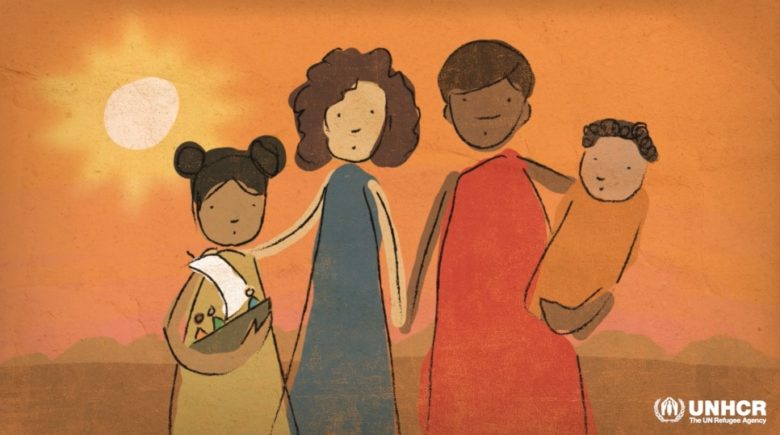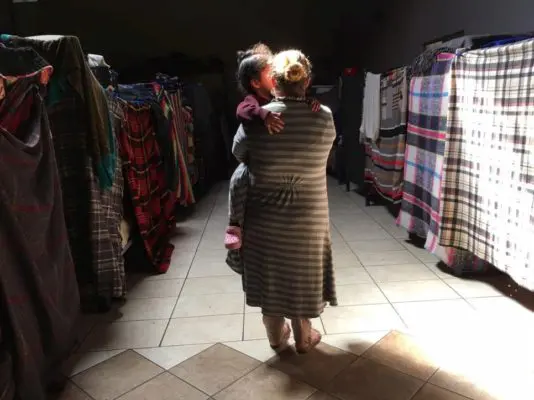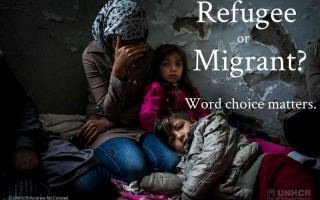
Animated series from UNHCR, the UN Refugee Agency, explains what it means to seek asylum at the U.S.-Mexico border. © UNHCR
By UNHCR Staff
Narrated by UNHCR Goodwill Ambassador Ben Stiller and supporter Mindy Kaling, an animated series looks at the rights of people forced to flee and the responsibility we all have to protect them.
Every day, people arrive at the United States border with Mexico seeking safety in the U.S. Some are running from dangerous gangs in Central America. Others have watched their neighbors, friends or family members die during armed conflict or war and fear they may be next. Some are fleeing persecution because of their sexual orientation or gender identity, religion, ethnicity or political views.
UNHCR’s animated series on asylum at the U.S.-Mexico border, narrated by UNHCR Goodwill Ambassador Ben Stiller and UNHCR supporter Mindy Kaling, offers an easy to follow explanation of what it means to seek asylum, or protection. The series of four videos explains the right to seek asylum, offers a look at who seeks asylum and the people who provide them humanitarian support.
“I am proud to lend my voice to UNHCR to help shed light on what it means to be a refugee – to be forced to flee your home and everything you know to seek safety,” said Mindy, an American writer, producer and director. “If you cut through all of the politics, we’re just talking about people and families doing whatever they can to survive the unimaginable. They need our help.
WHAT IS ASYLUM?
Though it focuses on the situation at the U.S. southern border with Mexico, the series illuminates fundamental truths about asylum anywhere and everywhere – starting with the fact that seeking asylum is a human right. Although specifics of the process can differ slightly around the world, applying for asylum means seeking protection from persecution, violence or war in a country other than one’s own. While not every request meets the criteria for approval, everyone seeking asylum has the right to have their claim heard; the right not to be returned to danger; and the right not to be discriminated against at the border for reasons such as race, gender or ethnicity. According to international law and standards, everyone seeking asylum must be treated with respect and dignity.
Increasing the public’s understanding of asylum has never been more critical. In the past year, migrants (people who are not fleeing persecution or violence but moving for economic or other reasons) and asylum seekers have crossed or attempted to cross the country’s southern border more than 150,000 times each month.
- See also: UNHCR viewpoint: ‘Refugee’ or ‘migrant’ – Which is right?
- See also: UN High Commissioner for Refugees calls on states to lift remaining pandemic-related asylum restrictions
WHO IS SEEKING ASYLUM?
As this series goes live, tens of thousands of potential asylum seekers are being denied access to asylum procedures in the U.S., mainly through the application of two specific policies. UNHCR has spoken out and encouraged the U.S. government to end these policies and restore access to asylum.
Under the “Title 42” expulsions policy, asylum seekers are never given the opportunity for safe haven because they are rapidly expelled back across the border, or directly to the home country from which they fled, with no screening of the risks they face and no opportunity to ask for asylum.
Under the “Migrant Protection Protocols” turn-backs policy, also known as “Remain in Mexico,” asylum seekers are pushed back across the border and made to wait in Mexico, often in extremely dangerous conditions and for many months or even years, until their asylum hearing date comes up.
WHAT IS THE RIGHT TO SEEK ASYLUM?
Ben Stiller, who has supported UNHCR’s work since 2016, has traveled to countries such as Germany, Jordan, Guatemala and Lebanon to meet refugees in person and advocate for their cause. He’s also testified in Washington, DC in front of the U.S. Senate Foreign Relations Committee to advocate support for Syrian refugees and urge people “not to look away.”
“Forced to flee their homes, refugees look for safety all around the world. The doorstep of the United States, the southern border, is one of the places where many ask for refuge,” Ben said. “We need to listen to those who ask us for help, not send them back to serious harm. It is the right thing – the human thing – to do.”
WHO’S RESPONDING TO THE NEEDS OF ASYLUM SEEKERS?
- See also: Expelled asylum seekers ‘crying out for help’ in northern Mexico
- See also: ‘They killed my husband. If I’d stayed, they would have killed me too’
Do you also stand #WithRefugees and help uphold the right to seek safety? Lend your voice on social media by standing #WithRefugees and supporting UNHCR’s life-changing work.
PLEASE DONATE TO SUPPORT ASYLUM SEEKERS TODAY
Originally published by UNHCR on 30 May 2022.





